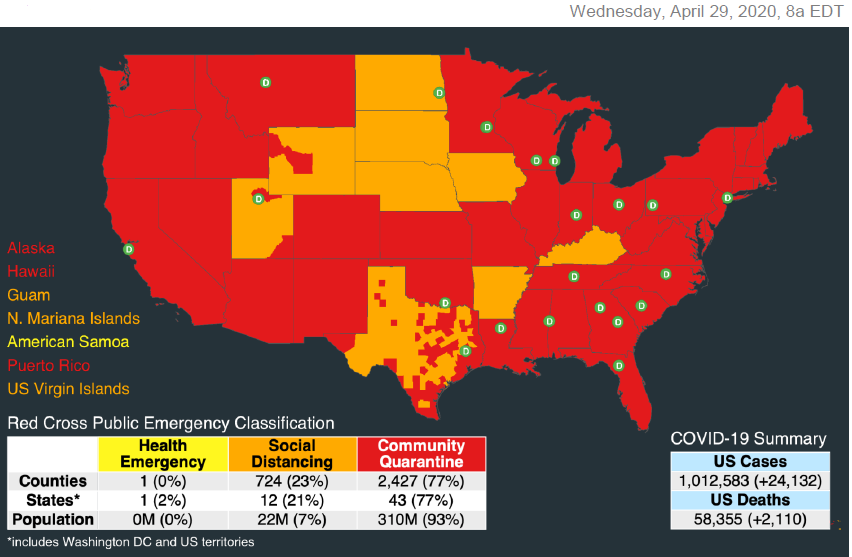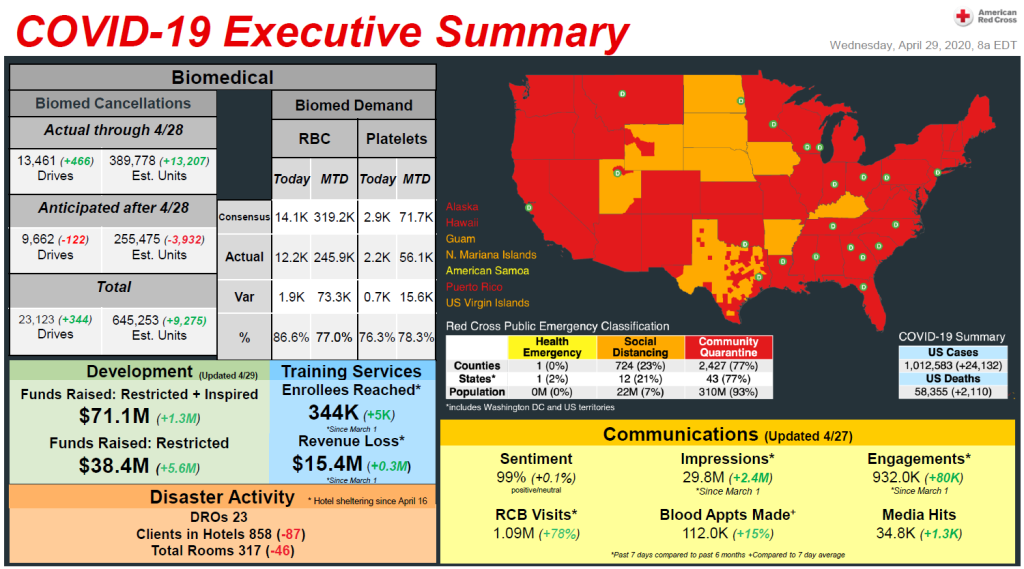15 251-20 – Coronavirus
Well, next up on everyone’s dance card in early 2020 was COVID-19 (or Coronavirus):
AI-generated overview from Google Gemini:
The onset of the COVID-19 pandemic in 2020 marked a watershed moment in global history. Here’s a summary of its initial stages:
Origin and Early Spread:
- The first cases of what would become known as COVID-19 were detected in Wuhan, China, in December 2019.
- Early cases were linked to the Huanan Seafood Wholesale Market, raising suspicions of an animal-to-human transmission. However, the precise origin of the virus remains a subject of ongoing investigation.
International Response:
- The World Health Organization (WHOWHO) activated its incident management support team and began monitoring the situation closely.
- As cases began to appear outside of China, countries around the world began implementing travel restrictions and screening measures.
- On January 30, 2020, the WHO declared the outbreak a Public Health Emergency of International Concern.
- On March 11, 2020 the WHO declared the outbreak a pandemic.
Escalation:
- The virus spread rapidly, leading to significant outbreaks in Europe, North America, and other regions.
- The lack of widespread testing and the novelty of the virus contributed to a period of uncertainty and fear.
- Governments implemented lockdowns, social distancing measures, and other public health interventions to slow the spread of the virus.
Key Early Developments:
- The rapid sharing of the virus’s genetic sequence enabled the development of diagnostic tests.
- Scientists and medical professionals worked tirelessly to understand the virus, its transmission, and its effects on the human body.
- The CDC began to put out information to the american public, and began to track cases.
In essence, 2020 began with the emergence of a mysterious illness that quickly transformed into a global crisis, requiring unprecedented international cooperation and public health measures.
For the Red Cross this was a monumental financial and human resources disaster – as their staff and volunteers were just as impacted health-wise, as any other organization. Think of the American Red Cross like a three-legged stool, when it comes to both the people on staff (employees and volunteers), as well as income and expenses:

The Red Cross normally receives revenue from its Blood and Training Services, which both covers the costs of delivering those services and produces income to support Humanitarian Services, which do not have any costs to those who receive them. Humanitarian Services includes disaster relief, service to the armed forces, and international services. All of these elements are also supported by donations from the American public. The American Red Cross is a non-profit organization, so there are no stockholders or investors, and no net income to distribute privately.
During COVID-19, all of those sources of revenue were compromised. In-person training courses such as CPR and First Aid were cancelled. Blood Drives were cancelled. Donations from the public waned, as the pandemic had a massively adverse impact on the U.S. economy. Still, other disasters occurred and the Red Cross continued to provide (and pay for) humanitarian services:
How the Red Cross Is Helping People During COVID-19
During the coronavirus (COVID-19) pandemic, life’s emergencies don’t stop — and neither does the work of the American Red Cross.
Each day, people still rely on us to help prevent and alleviate their suffering, and we’re grateful to our volunteers and employees working tirelessly to support those we serve, as well as to our generous donors who make the Red Cross mission possible.
Because everyone’s wellbeing is our top priority, we continue to work closely with public health officials to deliver our services safely and coordinate our efforts with government agencies and partners. This means that, as the coronavirus evolves and affects communities differently, our services may look different in each area to ensure we are aiding local families where they need us most.
“Being able to volunteer with the Red Cross has helped me overcome this feeling of helplessness that there’s nothing that you can do,” said Red Cross volunteer Phil Cogan, who has been taking emergency calls to help dispatch relief after local disasters. “It has demonstrated to me that even by being at home, I can make a contribution to help others through the Red Cross.”
GIVING COMFORT AND SUPPORT AFTER HOME FIRES As communities follow stay-at-home orders, the risk of home fires hasn’t gone away. Since February, when the coronavirus outbreak began to escalate in our country, Red Cross workers have helped more than 53,000 people recover from more than 13,000 home fires nationwide.
To help keep everyone safe and follow social distancing guidelines, Red Cross volunteers are working with local fire departments to connect with families by phone or video calls, offering a sympathetic ear and linking them to available support, such as providing hotel stays and emergency financial assistance.
With the help of the Red Cross, Jessie Austin and his neighbors are among those who found refuge in a hotel after a fire displaced them from their apartment. Red Cross volunteers have also delivered hot meals and helped them create recovery plans and locate available assistance.
“You can tell that they care,” Austin said of the Red Cross workers helping him. “That’s the main thing. I’m very appreciative of them.”
PROVIDING REFUGE FROM DISASTERS In addition to home fires, Red Cross volunteers are helping people displaced by disasters like recent tornadoes across several states in the U.S. — which has experienced the deadliest tornado season in nearly a decade. As we adapt our physical response due to COVID-19, we’ve provided more than 17,500 overnight stays in emergency hotel lodging since April 16, rather than opening traditional shelters for tornadoes, large home fires affecting multiple families and other crises.
We’re also working with public health officials on our COVID-19 plans to respond as needed to the ongoing threat of spring flooding, severe storms, wildfires and the above-normal hurricane season forecast for this year. We want everyone to receive help as quickly as possible, and that’s why the generosity of donors who provide support before crises happen is critical to ensure we have resources to mobilize at a moment’s notice.
DELIVERING RELIEF WHERE IT’S NEEDED MOST Responding during this public health crisis is a team effort, and the Red Cross is working closely with local partners to address people’s emergency needs — which vary by community, but include:
- Supporting Quarantine Shelters: To the extent our resources allow, and only when our government partners don’t have the capability, we’ve fulfilled more than 200 requests to support local quarantine and isolation facilities with more than 40,000 relief items, such as cots, blankets and hygiene kits, in California, Oregon, Texas, Washington and other areas.
- Distributing Food: To help ensure vulnerable people don’t go hungry during this crisis, we’re working with community partners to provide food where there are government-ordered quarantines or mandatory stay-at-home orders, when we have the resources to do so. We’re following social distancing protocols and setting up food distribution sites where possible. This includes several requests for volunteers to support critical feeding missions for some of the hardest-hit areas, such as Los Angeles and New York City.
- Connecting Families: In places such as Arizona, families are using our Safe and Well system to know when loved ones are transferred from smaller rural hospitals to larger urban ones.
- Providing Health and Mental Health Services: Red Cross volunteers are supporting health and mental health needs in several areas, including Kentucky, where they’re helping to answer questions about COVID-19 as part of a state health department hotline, and in Rhode Island, where friendly volunteers are calling older adults to provide wellness checks and a sense of community for a state government-led effort.
FULFILLING OUR LIFESAVING MISSION Beyond disasters, we’re helping people through other parts of our mission:
- Maintain 40 Percent of the Nation’s Blood Supply: Thanks to the many who gave blood and scheduled upcoming appointments, the Red Cross has been able to meet immediate patient needs. During this uncertain time, we encourage people to keep scheduled appointments and make new ones for the weeks ahead to ensure a stable supply throughout this pandemic for patients relying on lifesaving blood transfusions.
- Train People with Lifesaving Skills: We continue to provide COVID-19 safety tips and online courses, including our new free Mental Health First Aid for COVID-19 course to help you manage stress while caring for yourself and supporting your family and coworkers. In order to support critical health care and essential workforce needs for training in resuscitation, CPR and first aid, courses are offered, where permitted, with social distancing approaches and follow public health guidance. Provisional certification courses are also available. To help those who are currently certified, we are now offering a free online-only 120-day extension course.
- Provide 24/7 Global Support to Military Families and Veterans: Through our network of chapters and Red Cross stations on military bases worldwide, we’re still providing support like sending emergency messages between deployed service members and loved ones at home. Our work also includes supporting military and veteran hospitals, assisting efforts to map and help contain the spread of COVID-19, providing online stress-relieving workshops, working with volunteers to sew face coverings, giving comfort kits with hygiene items to military families sheltering in place, and helping them navigate COVID-19 changes.
- Aid Communities Worldwide: Overseas, Red Cross and Red Crescent volunteers are helping communities cope with the virus through a variety of lifesaving actions — from transporting patients to hospitals in Italy to installing more handwashing facilities in Bangladesh’s refugee camps. For its part, the American Red Cross has made a $720,000 contribution to international Red Cross efforts to help mitigate the spread of this virus and has deployed (both physically and virtually) specialists in mental health, communications and data management.
HOW YOU CAN HELP This is the time to take care of one another. Join us:
- Give Blood: Please make an appointment to donate in the weeks ahead, if you are healthy and feeling well, by using the Red Cross Blood Donor App, visiting RedCrossBlood.org or calling 1-800-RED CROSS (1-800-733-2767).
- Donate: Support all of the urgent humanitarian needs of the American Red Cross by donating to Where It Is Needed Most at redcross.org or calling 1-800-RED CROSS (1-800-733-2767). A donation of any size makes a difference.
- Volunteer: Our need for volunteers is constant and continues to evolve as we navigate this health crisis. Visit redcross.org/volunteer for opportunities, including supporting blood donations and providing help from home.
Source: American Red Cross[1]
During COVID-19, Red Cross senior leadership was laser-focused – daily – on what the ‘common operating picture’ was like – and what they could do, pivot, adjust, etc. to continue operating. Below is one of the map images they saw in a daily report: this was from April 29, 2020. It shows the states where there were ‘state of emergency declarations’ indicating quarantine orders by governors, as well as states where social distancing was either required or recommended. Between the start of this pandemic in the United States and this date, there was a daily color change for each state – ranging from a health emergency declaration to the most strict category of a community quarantine.
On the map below, the “D”s in a green circle are additional Red Cross Disaster Relief Operations (DROs) – where the expenditures from the Red Cross exceed $10,000 or more. On this date, there were 23 DROs occurring across the country:


I spent my time remotely helping the Red Cross’ national headquarters team produce this report, for almost all of 2020. No business cards for this role.
Lessons Learned
- I learned quite a bit more about how the organization operates. And how it has to remain agile, literally day-to-day. I also learned a ton about how dashboarding works – especially the technical side of linking disparate systems together. The dashboard tool we used was a combination of ESRI’s ArcGIS, PowerBI, and other systems – some proprietary to the Red Cross – with Application Programming Interfaces (APIs) connecting all these datapoints together in an easy-to-understand visual representation. I learned that leadership at the top of the organization – folks like GM, TR, BK, NA, MN, CH (both of them), MH, and many others – genuinely prioritized the workforce of the Red Cross first and the missions next. In theory, that is always how it should be done, but in practice – especially when everything everywhere is falling down around you – it is not that easy to actually do. In my opinion, you will never see government doing this, and that was another lesson I learned during COVID-19: Public Health can be weaponized to protect everyone else against you. In other words, individual’s rights – including access to healthcare – can be superseded by a government for the ‘greater good’. From the time of Sandy in 2012 through 2019, I had learned to pretty much operate my ‘office’ out of my vehicle, a laptop, and a backpack. I did a lot of itinerating from office to office during those years. During all of 2020, for me it was work from home. And I am still doing that now in 2025. I like to say, with a bit of chagrin and amazement myself, that I went (pretty much) that entire year without wearing pants.
- I learned that my own level of personal/family preparedness was no where ready for a pandemic. I had flood protection, could deal with extended power outages, kept my ‘go bags’ ready and updated for evacuation, and maintained short-term shelter-in-place plans, organization, equipment, training, and exercising (yes, the POETE can be applied at home for almost any project, including family preparedness); but I was ill-prepared for the nationwide run on toilet paper, hand sanitizer, and masks. I had that PPE – but not for months or even a couple of years.
- I learned I hate (and there are very few things in life I can really state that I ‘hate’) the phrase “out of an abundance of caution”. That horrible phrase was utilized quite a bit by leaders during COVID-19. What it translates to me and others is “We had a plan, but we chose not to use it.” Chances were, those plans put people’s lives ahead of economic priorities (or corruption, deal-making, whatever). Look back at any time when that phrase was used, and see who really benefited and who was really hurt.
And speaking of hate; 2020 also saw the murder of Mr. George Floyd and the massive civil unrest throughout the nation, which followed. I learned that when emergency management principles such as unity of effort and unified command are not followed, death and destruction can and will follow. And I learned that there is only one person I can truly rely on to protect my family from threats and hazards of any kind: me.
Lessons Applied
The leadership lessons from COVID-19 still need to be applied for many. This story with its multitude of lessons, is still being written by me and by others.
- I did a lot of writing during COVID-19. Posting on blogs, writing articles for journals, and started the outline for my first book (shameless plug, info on that book and others can be found at the end of this book). Most of these works were published elsewhere, so the copyrights are not mine. Here are two COVID-19 specific ones – which were started or visualized during 2020-21 – and may be worth exploring, for those in emergency management or allied fields:
- The organizational continuity aspects for groups involved in emergency management, from a long-term disaster such as a pandemic: “Recognizing and mitigating against COVID-19 consequence management impacts in emergency management organizations” from the Journal of Emergency Management [paywalled article].
- The need to view global pandemics as extinction-level events, which cannot be managed solely by emergency management entities: “Global Pandemics are Extinction-level Events and Should not be Coordinated Solely through National or Jurisdictional Emergency Management” originally published at the Naval Postgraduate School’s Pracademic Affairs. If you are having trouble finding that free online article, you can click here.
- I also was (and still am) deeply concerned about the crisis communications messaging around the incorrect use of N-95 respirators on children. N-95 respirators are not the same as KN-95 masks. Bottom line is that N-95’s are not designed for kids, and they are not designed for every adult for everyday use, either. You can find that message here.
- And guess what – I now keep at least 60 rolls of toilet paper at home. Seriously.
- https://www.redcross.org/about-us/news-and-events/news/2020/how-the-red-cross-Is-helping-people-during-covid-19.html ↵
Novel Coronavirus
World Health Organization
